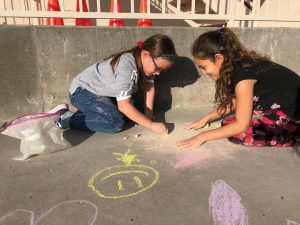 While I am somewhat short and let’s say wizened, neither stature nor age has bested me, nor have my two brain surgeries and toxic chemotherapy for breast cancer.
While I am somewhat short and let’s say wizened, neither stature nor age has bested me, nor have my two brain surgeries and toxic chemotherapy for breast cancer.
I stand against the wind akimbo, not despite these health ailments, but precisely because of them. I have taken my survival through these harrowing moments, not as narrowly escaping the final surrender, but as proof of an inner strength, a resolute resilience.
What is resilience and how does it relate to brain function?
Scholars define resiliency as the capacity to cope successfully with everyday challenges, significant life events, cumulative stress and major adversity. It is precisely the response to stress that makes a person resilient. However, the stress is not merely the stressful event, but also the effect the stress has on the body.
During times of stress or adversity, every person’s body goes through a fight or flight response. The heart rate increases, blood pressure rises, and stress hormones gush through the body. To deal with stress, the amygdala, the part of the brain that expresses fear responses, sends messages to the brain to release hormones, cortisol and adrenaline. These physiological responses prepare the person to respond, to do some thing that will provide relief.
This is a critical juncture because if the stress continues, serious health problems may arise. Chronic stress critically depresses the immune system. It shuts down the prefrontal cortex at the front of the brain. Without the prefrontal cortex (PFC), we lose the ability to solve problems and control our impulses. We lose attention and focus, becoming subject to the will of our vacillating emotions.
The loss of the PFC also is our most trusted soldier. Stimulating the prefrontal cortex undoes our stress response and calms the body. The body is able to undergo physiological changes, reducing high blood pressure and increased heart rate. Resilience also enhances the body’s capacity to cope with adversity and risk. Doctors call this activating the parasympathetic nervous system. We call it resilience.
How do we build resilience in children?
Children have different stresses and different genetic and predisposed abilities to cope with stress. While all children have the ability to handle small amounts of stress, when the stress becomes too much, children withdraw, becoming defiant or angry. These behaviors create undesired, long-term behavior patterns.
To build resilience, scholars have suggested a range of protective factors. There are internal protective factors, like a child’s personal characteristics, temperament and openness. There also are external protective factors. The external factors include children’s family, friends, school and community interactions, which can either shield the children or place stress on them. Internal and external assets serve as positive influences to build resilience.
Practicing situational awareness (or mindfulness) can help children separate the facts from their feelings. Simply breathing out longer than breathing in activates the parasympathetic nervous system, telling the brain to relax and the heart rate to slow down. They learn not to listen to their impulses or give into fears and perceived injustices. They learn to wait a few seconds, and ultimately find wiser courses of action.
External factors also contribute to the development of resilience—external factors like a positive school environment and a feeling of connectedness to the school. Schools play a significant role in developing resilience, and can provide opportunities to build resilience by recognizing the importance of developing protective factors.
Even the school-home interaction is critical to developing the sense of belonging. A comforting nexus between the various places a child spends his time helps to provide a sense of safety, a place from which the child can respond more appropriately to stress. A positive relationship between home and school promotes the development of resilience, since there is a continuous solid ground upon which a child can rely if the stress becomes too great.
For this reason, one of Self Development Academy’s (SDA) core values is resilience. Schools must then be a safe environment, a place where we provide children those external factors that help nurture resilience. In this environment, we can focus on building children’s self-esteem and self-efficacy, by encouraging critical thinking, problem solving and social skills.
SDA is a school that has a caring educational environment and high expectations that help develop resilience. We know that line between pushing to excel and pushing to excess. While we offer high school level courses in middle school, we also provide individualized learning programs. For instance, we adjust homework levels for specific students. What we hope is that children build trust in the adults in their lives, encouraging them to look for support during times of tribulation.
Teachers can be the supportive adults who model social skills and protect children. Further, a school, such as SDA, creates a safe environment for peer bonding and positive social interactions that encourage the development of self-efficacy.
At SDA, we believe all children can have exceptional futures. Whereas we cannot change their inherited traits or the difficulties they may face, we can give them the coping skills to triumph over tribulations they may face. We can help build resilience by creating a nurturing environment with supportive adults, positive bonding with friends, and home-school relationships that encourage the growth of resilience.
SDA is enrolling for the 2019-2010 school year. For information about Self Development Academy, call (480) 641-2640.

